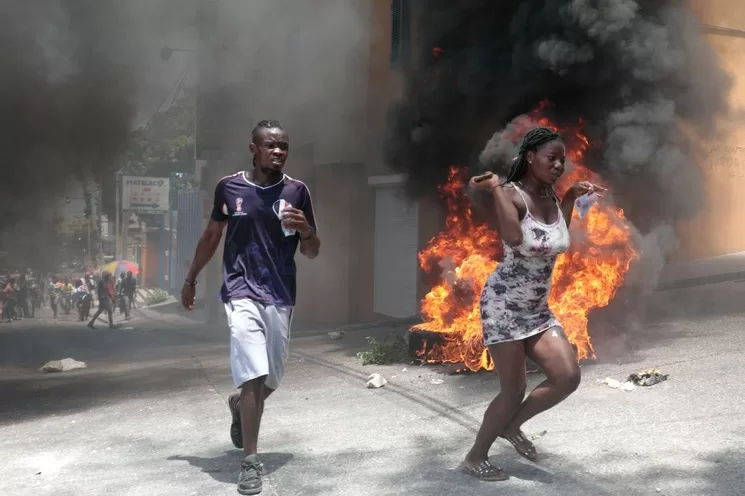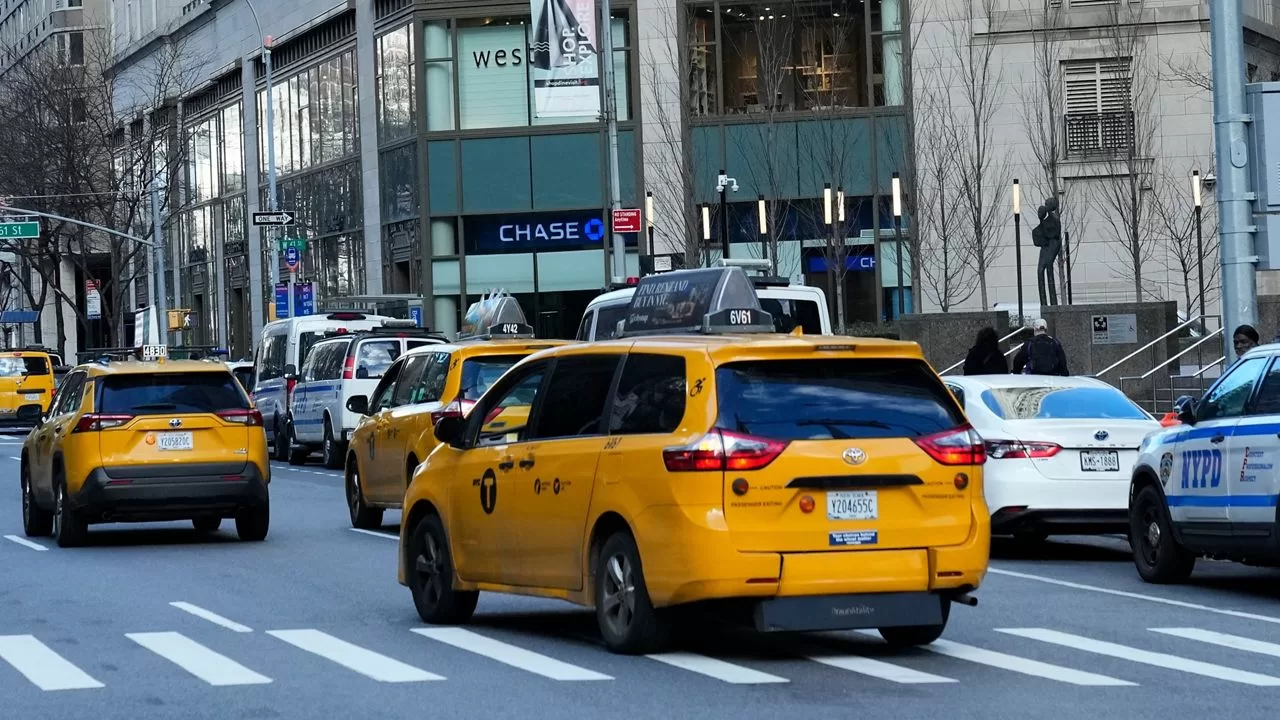Prince Port. With their faces covered, thousands of people marched through the Haitian capital yesterday to demand protection from the violence of the gangs that looted the neighborhoods of the capital, Port-au-Prince, and other parts of Haiti.
The daily life of Haitians has been disrupted by the incessant gang violence, which has worsened poverty throughout the country, which awaits a decision by the Security Council of the United Nations (UN) on the possible deployment of an international armed force.
“We want security!” the crowd chanted as they marched for more than two hours from the troubled community of Carrefour-Feuilles to the Champ de Mars in the city center, before heading to the official residence of the prime minister, Ariel. Henry, where police dispersed protesters with tear gas.
“I can’t work, I can’t go out. I feel like a prisoner in my own home,” said Wilene Joseph, a 36-year-old street vendor and mother of two who joined the march.
“I am worried that they will shoot my children (5 and 7 years old) because the bullets fly incessantly in all directions,” denounced Joseph, who stressed that “this situation is unacceptable.”
According to experts, since the assassination of President Jovenel Moïse in 2021, gangs have taken control of 80 percent of Port-au-Prince, killing, raping and terrorizing communities that previously suffered from endemic poverty.
From January to March, more than 1,600 people were killed, injured or kidnapped, an increase of almost 30 percent compared to the last three months of 2022, according to the most recent UN report.
The United Nations Children’s Fund (Unicef) reported an “alarming increase” in kidnappings, with around 300 confirmed cases of women and children so far this year, almost matching the number reported for all of last year and nearly three times the total of 2021.
He added that the kidnapping leaves lasting “physical and psychological scars”, and recalled that both minors and women in the Caribbean country are exposed to unimaginable violence.
“Women and children are not merchandise. They are not bargaining chips,” warned the regional director for Latin America and the Caribbean, Garry Conille, in a statement. And he added: “The stories we hear from UNICEF colleagues and our partners on the ground are shocking and unacceptable.
“The growing trend of kidnappings is extremely worrying, and threatens both the people of Haiti and those who have come to help,” says the UNICEF official.
The situation in Haiti is “catastrophic”, recalled the organization. Some 5.2 million people, almost half the population of the poorest country in the region, depend on humanitarian aid, including almost 3 million minors.
As if that were not enough, local health systems are teetering on the brink of collapse and schools are under attack, keeping the civilian population under constant terror.
Increased violence, looting, road blockades and the omnipresence of armed groups hamper the delivery of aid to affected communities.
The Afp news agency reported that malnourished children kept arriving at the Fontaine Hospital in Cité Soleil, the largest gang-controlled slum in Port-au-Prince.
The health center, installed more than 30 years ago in this impoverished neighborhood, offers a rare respite to the inhabitants of this “non-rights zone”, in the words of its founder, Jose Ulysse.
Medical personnel take care of babies and young children brought by their mothers or sent by associations or even by priests, the director explained to Afp.
“Every day we receive between 120 and 160 children for vaccination, and that’s when we do tests, especially on malnutrition,” he details.
“Four or five years ago, in this lot there were 10 children a day who needed nutritional help. Today they are between 40 and 50 ”, she laments.
Less severe cases return home after some examinations and nutritional support is provided to their families. Those who are in critical condition are hospitalized. “Some are emaciated and have trouble breathing,” says the director.
Gaunt faces, protruding ribs, swollen abdomens, rickets: children, all under the age of two, often suffer from medical complications.
Most of the little ones remain in the place for weeks with their mothers, until their weight stabilizes. Women also generally present pictures of malnutrition.
More than 100 thousand children will suffer fatal malnutrition
Nearly one in four children suffer from chronic malnutrition, and 115,600 are expected to suffer from the deadliest form of malnutrition this year, UNICEF reports.
The exacerbation of the chronic political and security crisis affecting the small Caribbean country, accompanied by a worrying resurgence of cholera cases, are at the origin of these ills.
“More and more mothers and fathers lack the means to provide adequate food for their children,” UNICEF country director Bruno Maes declared in May.
“Violence has consequences throughout the life of the Haitian population, because it is everywhere”, Ulysse emphasizes.






